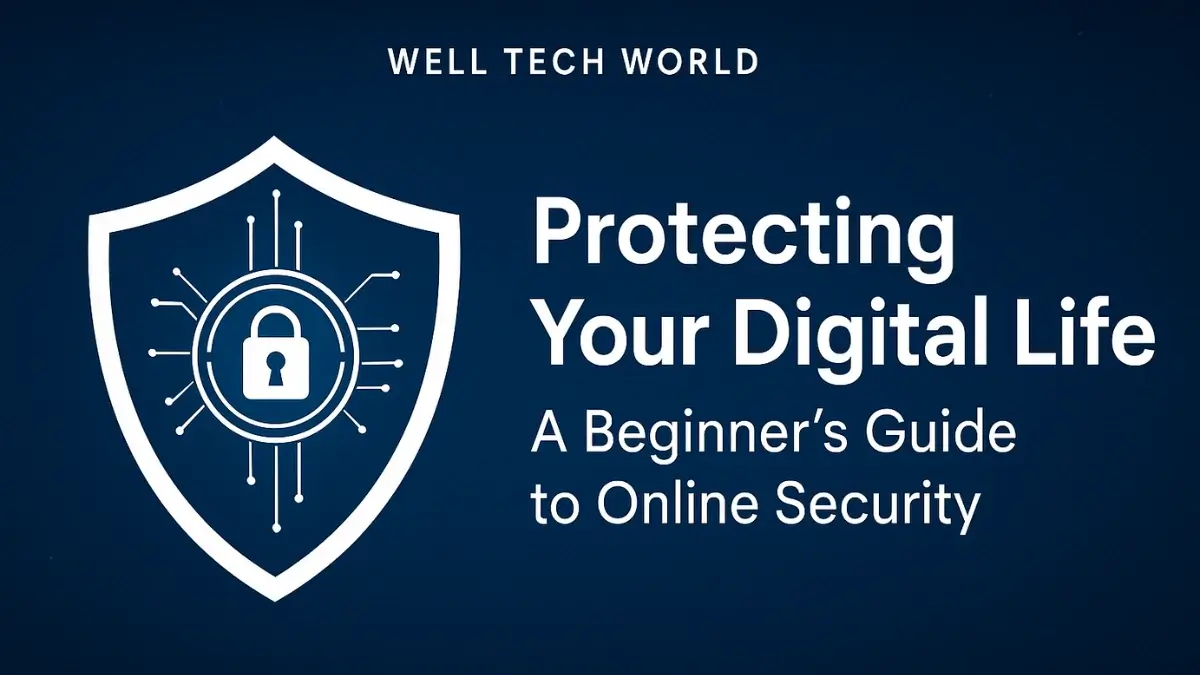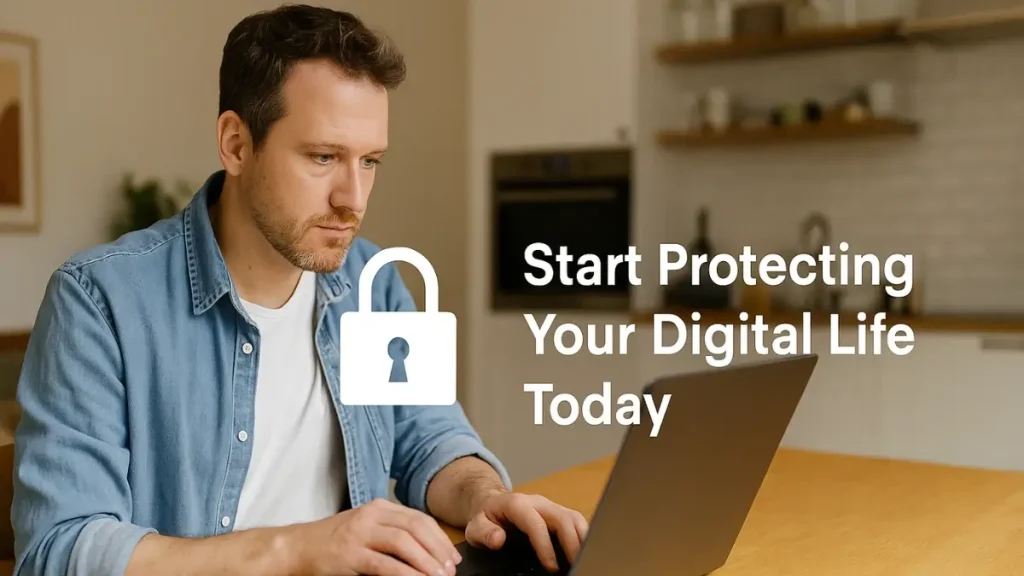
Learn simple tips for protecting your digital life. A beginner’s guide to online safety for users in the USA, UK, Canada, Australia, and more.
In today world, where almost everything happen online, Protecting Your Digital Life has become more important than ever. Many of us shop online, pay bill, send email, and even store our personal memory on the internet. But while the internet brings great convenience, it also bring risk. Hacker, scammer, and even company might try to get access to your private information.
This blog post is a beginner guide to Protecting Your Digital Life. We will talk about simple steps that anyone can take to stay safe online. You don’t need to be a tech expert to understand these tip. This guide is written in plain, easy English for people living in the USA, UK, Canada, Australia, Netherland, and Ireland.
Why Is Online Security Important?
Let’s start with the basic. When you go online, you leave digital footprints. This means website, apps, and even hacker can track what you do. If you’re not careful, your bank detail, password, or private photos could fall into the wrong hand.
Protecting Your Digital Life mean keeping your personal data safe from threat. It also means learning how to spot scam and understanding what to share and what to keep private.
Common Online Threats
Before we jump into how to protect yourself, let’s understand the common danger you may face online.
1. Phishing Scam
Phishing is when someone send fake email or message pretending to be a trusted person or company. The goal is to trick you into giving away your login detail or clicking harmful link.
2. Weak Passwords
Using simple or repeated passwords is like locking your front door with a toy lock. It makes it easy for hackers to break in.
3. Public Wi-Fi Risk
Free Wi-Fi in coffee shops or airport might seem helpful, but it’s often not safe. Hacker can use public Wi-Fi to spy on what you do.
4. Malware and Viruse
Malware is harmful software that can damage your device or steal your information. It can come through email, fake app, or shady website.
Easy Steps to Start Protecting Your Digital Life
Now that we know the danger, let’s look at what we can do to stay safe.
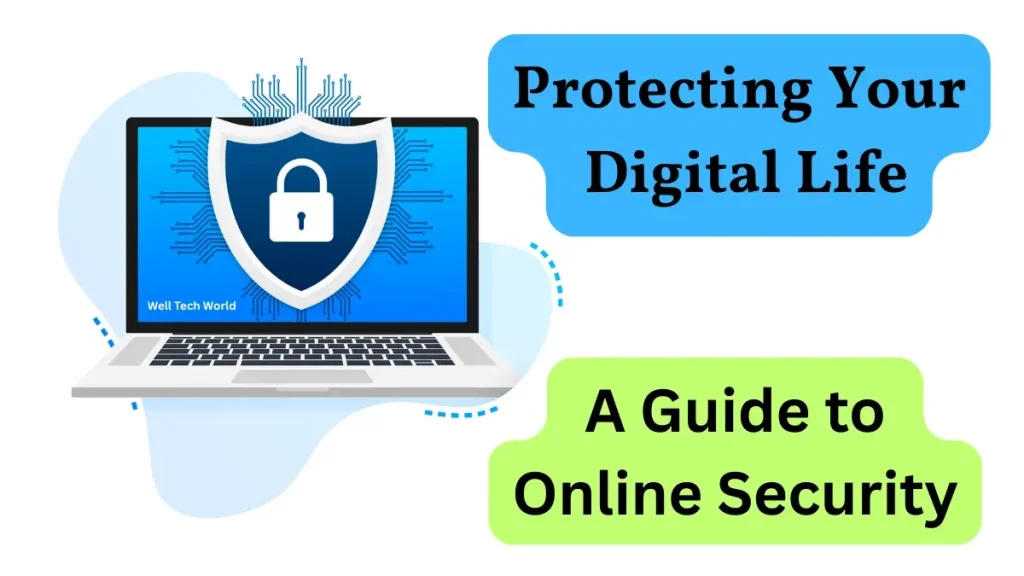
1. Use Strong Passwords
Create password that are long and hard to guess. Use a mix of letter, number, and symbol. Don’t use the same password for every account. Try using a password manager to remember them.
Example: Instead of using “john123”, use something like “J0hn\$ecure_2080”.
2. Turn On Two-Factor Authentication (2FA)
Many site let you add a second step when logging in, like a text message or app code. This makes it much harder for hacker to get in, even if they have your password.
3. Update Your Devices
Always keep your phone, computer, and apps up to date. Update often fix holes that hacker might use to attack your system.
4. Be Careful With Emails
Don’t click link or open attachment from people you don’t know. If an email looks strange, it’s best to delete it.
5. Use Antivirus Software
Good antivirus software can find and remove harmful files from your computer. Many options are free or low-cost.
6. Think Before You Share
Before posting on social media, ask yourself: “Would I want a stranger to see this?” Oversharing can lead to identity theft.
7. Backup Your Data
If your phone or computer crashes, or if a hacker locks your files, backup can save you. Use a cloud service or an external hard drive.
8. Secure Your Wi-Fi
Always set a password on your home Wi-Fi. Don’t use the default name and password that came with your router.
9. Avoid Public Wi-Fi for Sensitive Tasks
Don’t check your bank account or send private emails on public Wi-Fi. If you must, use a VPN (Virtual Private Network).
10. Teach Your Family
Protecting Your Digital Life is not just for you. Talk to your family—especially kids and older adults—about being safe online.
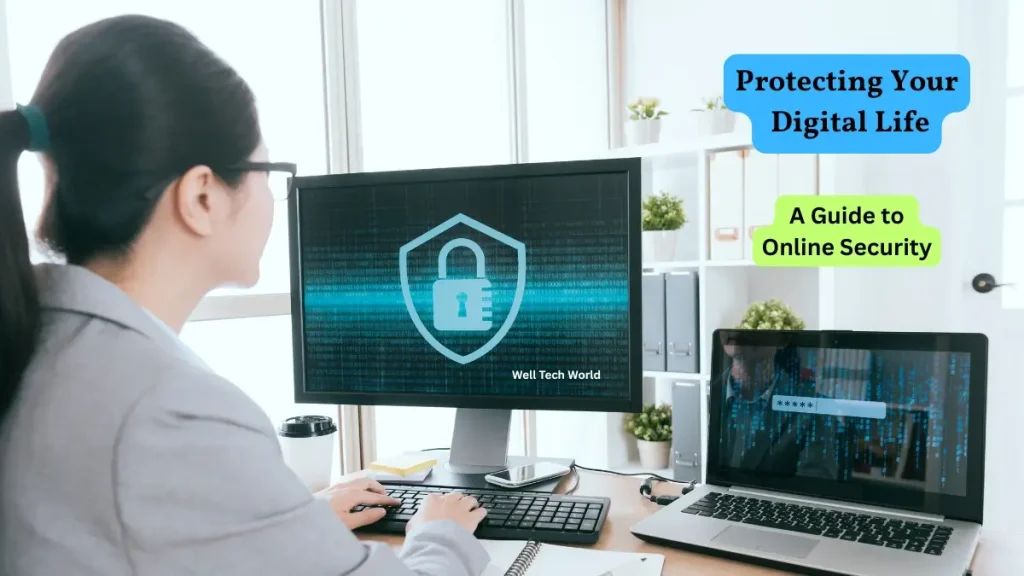
Tips for People in USA, UK, Canada, Australia, Netherland, and Ireland
No matter where you live, online risk are the same. But here are a few local safety tips:
- In the USA, beware of phone calls claiming to be from the IRS or Social Security. They often ask for your detail.
- In the UK, don’t trust messages claiming you owe money to HMRC unless verified.
- In Canada, the CRA scam is common. Always check the government official website.
- In Australia, fake parcel delivery text are popular scam.
- In the Netherlands, be careful of banking scam, especially ones that ask for your DigiD.
- In Ireland, there’s been a rise in text scam pretending to be from An Post or Revenue.
By staying informed and cautious, you’re already taking big steps in Protecting Your Digital Life.
Check Today Google For Two-Factor Authentication Help
Long-Term Habits for Online Safety
Making a habit of safe internet use is the best way to protect yourself. Here are a few long-term habits you should build:
- Review your accounts regularly. Look for signs of strange activity.
- Use different emails for different thing. For example, one email for banking, another for shopping.
- Don’t save your credit card detail on every website.
- Learn to recognize fake website. Look for “https” in the URL and a padlock symbol.
- Use privacy settings on social media to control who sees your post.
Final Thoughts
The internet is a big and amazing place. But just like in real life, you need to be careful who you trust. With a few smart choice, you can keep your digital life safe and private.
Remember, you don’t need to be a computer genius to stay protected. By following the simple steps in this guide, you’re well on your way to Protecting Your Digital Life.
Recap: Key Steps to Protecting Your Digital Life
- Use strong and unique password
- Turn on two-factor authentication
- Keep your devices updated
- Be careful with suspicious email
- Install antivirus software
- Share wisely on social media
- Backup your data
- Protect your Wi-Fi network
- Avoid risky public Wi-Fi
- Educate your family
By following these steps, you can enjoy the internet while staying safe. Keep learning, stay alert, and help others do the same.
FAQs: Protecting Your Digital Life
1. What does “Protecting Your Digital Life” mean?
Answer:
Protecting Your Digital Life mean keeping your personal information safe when using the internet. This includes your email, photo, bank account, and anything else you use online. It helps stop hackers, scammers, and strangers from getting into your private data.
2. Why is online safety important in today world?
Answer:
Most of us use the internet every day—for shopping, banking, talking, or working. Without online safety, someone could steal your money, your identity, or even your personal photo. Protecting Your Digital Life helps prevent this and keep your information secure.
3. How can I create a strong password?
Answer:
A strong password is long and not easy to guess. Use big and small letter, number, and symbol. Don’t use your name, birthday, or the word “password.” For example: P@ul_2080_Safe. It’s a big step in Protecting Your Digital Life.
4. What is two-factor authentication (2FA)?
Answer:
Two-factor authentication add an extra step when logging in. First, you type your password. Then, you get a code on your phone or email. This makes it harder for hackers to break into your accounts. It’s a smart way to help with Protecting Your Digital Life.
5. Is public Wi-Fi safe to use?
Answer:
No, public Wi-Fi in places like cafés or airport is often not safe. Hackers can watch what you do online. Never use public Wi-Fi for things like online banking or logging into your main accounts unless you use a VPN. Avoiding unsafe Wi-Fi helps in Protecting Your Digital Life.
6. What is a phishing scam and how do I avoid it?
Answer:
A phishing scam is when someone send a fake email or message to trick you. They may ask for password, bank details, or tell you to click on a bad link. To avoid it, don’t open messages from people you don’t know. Always check if the email looks real. Phishing is one of the biggest dangers to Protecting Your Digital Life.
7. Do I need antivirus software on my computer?
Answer:
Yes, antivirus software help find and remove bad files like viruses or malware. It protects your computer from being hacked or damaged. Even if you are careful, it’s a good tool for Protecting Your Digital Life.
8. How can I keep my children safe online?
Answer:
Talk to your children about online safety. Teach them not to share personal information with strangers. Use parental controls on devices and check their privacy settings. Keeping your family informed is part of Protecting Your Digital Life.
9. How often should I back up my data?
Answer:
You should back up your files at least once a week. Use a cloud service or an external hard drive. If your computer crashes or gets hacked, a backup will save your important files. Regular backups are key to Protecting Your Digital Life.
10. What should I do if I think I’ve been hacked?
Answer:
If you think someone has hacked your account:
- Change your passwords right away.
- Check your accounts for any strange activity.
- Tell your bank if your money might be at risk.
- Run a full virus scan on your device.
Act fast. Quick action is very important when Protecting Your Digital Life after a possible attack.
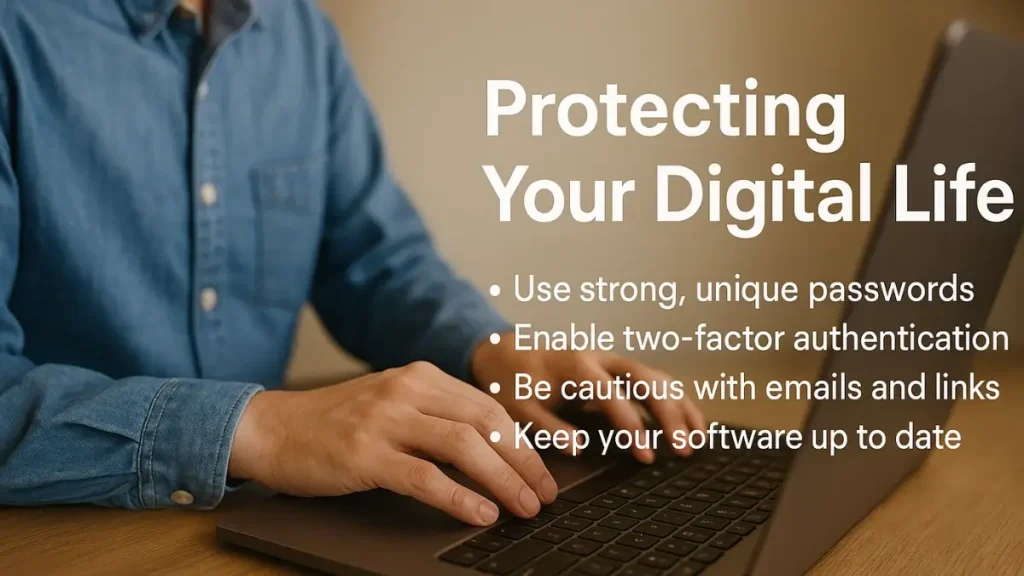
✅ Author & Writer Introduction (For Webpage)
About the Author – Pejus Datta
Hi, I’m Pejus Datta, the founder and lead writer of Well Tech World. I’m passionate about helping everyday people navigate the digital world safely and wisely.
At Well Tech World, we focus on more than just tech—we share reliable information on technology, healthcare, women’s product reviews, baby product reviews, and other trusted product insights. Our mission is to provide honest, simple, and useful advice that improves your everyday decisions—online and offline.
With years of experience in digital safety and consumer research, I aim to make complex topics easy for everyone. Whether you’re trying to stay secure online, find the right baby monitor, or explore a new wellness tool, I’m here to guide you with clear, helpful content.
Got questions or feedback? Feel free to reach out:
📧 Email: support@welltechworld.com
Stay safe,
Pejus Datta
Writer at Well Tech World


